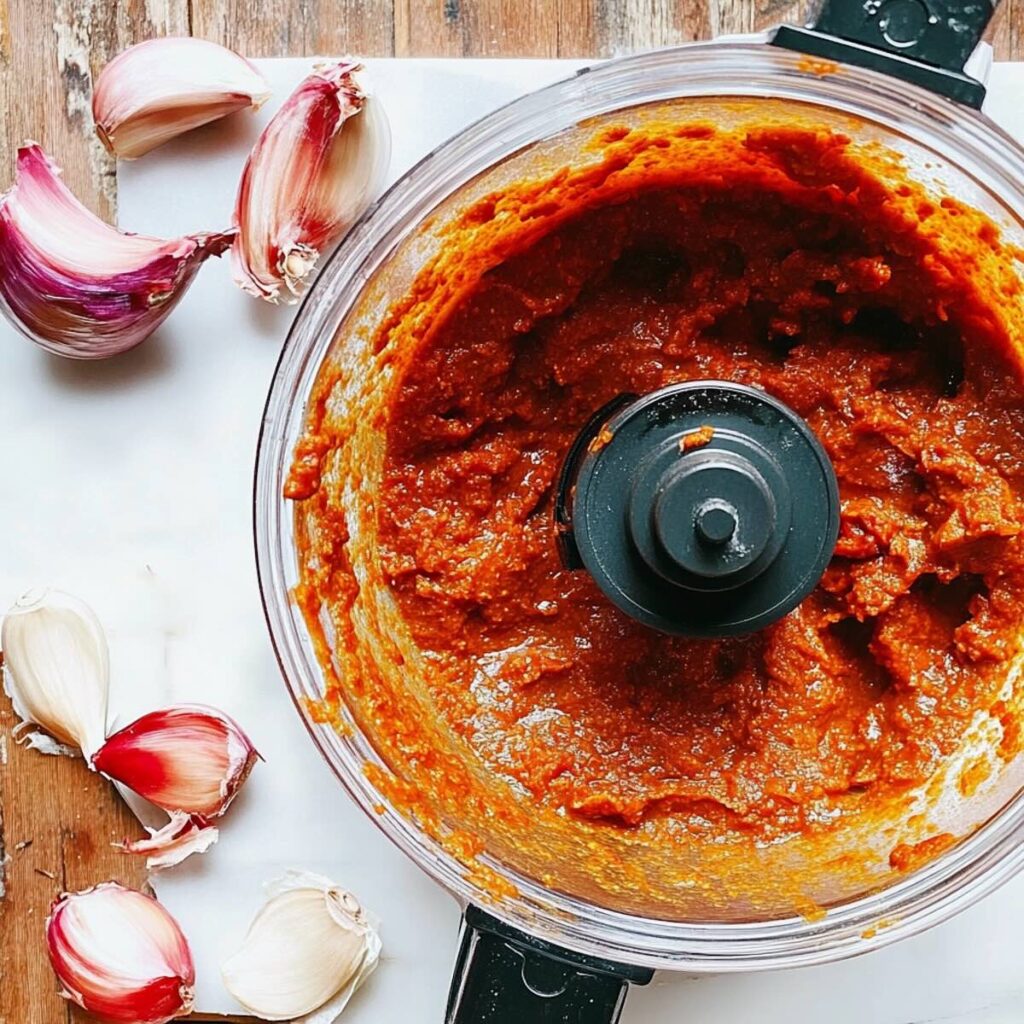
Short on time, but want Tom Yum packed flavor in your weeknight dinners? Discover all the secrets to making your own easy Tom Yum Paste!
Looking for other homemade Thai curry paste recipes? Check out my Massaman Curry Paste Recipe and use it to make not spicy Thai chicken curry or my Panang Curry Paste recipe if you like spicy Thai curries!
Why you’ll love this recipe
- A Thai cooking class instructor (aka me, Sherri! :)) will be sharing with you step-by-step all my top Thai cooking secrets in this recipe!
- Makes quick weeknight dinners so much easier! Just make the Tom Yum paste ahead of time, and it’s ready to go to make a quick weeknight Tom Yum Fried Rice or Tom Yum Pasta!
- Even better than store bought Tom Yum Paste because it doesn’t contain additives, and you can make it to your personal taste!
What is Tom Yum Paste?
Tom Yum or Tom Yam, ต้มยำ, translated to English, Tom, means boiled, and Yum means mixed. Yum can also refer to the spicy Thai salad, which has similar sour, spicy flavors to Tom Yum soup.
Tom Yum is a family of hot and sour soups in Thailand that usually has ingredients like galangal, lemongrass, kaffir lime leaves, Thai chilies and a Thai chili paste.
Tom Yum paste is made by breaking down all those ingredients and instead of adding the whole ingredients to the soup, adding the paste.
In Thailand, pastes are the base for flavor packed dishes like curries, but Thais also like to make pastes like Tom Yum to make dishes like Tom Yum soup and Tom Yum fried rice easier than chopping up all the herbs and then adding them.
Sherri’s Story
I prefer to make Tom Yum Soup by chopping up all the fresh herbs and putting them in the soup, so typically I don’t use Tom Yum paste to make Tom Yum soup.
Tom Yum is such a classic Thai dish, I like to take the time to chop the ingredients and see the herbs floating in the soup, and for us it just feels more like an authentic taste of our other homeland.
But I love Tom Yum paste! If you do want a quick Tom Yum Soup weeknight dinner you can make it by using:
- 2-3 tbsp of the paste per 1 cup of water, add more to taste
I use it the most when I want to give Tom Yum flavors to a quick, weeknight dish, like when making Tom Yum Fried Rice, Tom Yum Pasta, or Tom Yum Wings.
- Just add a few tablespoons of the paste where you’d normally add the fresh Thai ingredients like lemongrass, galangal, Thai chilies and kaffir limes.
For all those dishes, you really need all the Tom Yum ingredients broken down, and not in their whole form, so the paste works perfectly for that!
Ingredient Notes
If you don’t have some of these ingredients, no worries! Look below in the post under the heading, Additions and Substitutions, and I’ve listed many substitutes.
Dried red Thai chili peppers: These peppers add the fruity, earthy, spicy flavor to the Tom Yum paste.
Dried Guajillo chilies: These peppers have a mild sweet, fruity, tangy, smoky flavor, and really the main purpose of them is to add the beautiful red color to the Tom Yum paste.
Lemongrass: has a mild citrus flavor with hints of ginger and cooling mint. The lemony smell always reminds me of Fruit Loops for some reason! Love it! Lemongrass is packed with antioxidants, and has many other health benefits.
Galangal: adds a spicy, peppery, citrusy, piney, earthy flavor with a touch of heat. Plus it helps protect against inflammation and pain, and has many other health benefits!
Shallot: add a sharp, intense note.
Garlic: adds depth and richness to the flavor.
Cilantro stems: the spicy, herby sweet stems are packed with even more cilantro flavor than the leaves, and adds sharp, clean notes.
Kaffir lime leaves: add a spiced-citrus flavor, which is lighter and zestier than a bay leaf.
White pepper powder: White pepper powder is used more often in Thai cooking than black pepper. White pepper powder dissolves easier in sauces and marinades, and has a more pungent, spicy flavor than black pepper.
Coriander seeds: Coriander seeds add a bright, citrus, peppery flavor.
Tamarind paste: adds a sweet, sour, tangy, tart flavor. When kids take my Thai cooking class they say it tastes like a Sour Patch Kid candy, agreed!
Shrimp paste: adds a salty, pungent, funky, umami flavor with deep, savory rich notes.
Fish sauce: My fav magical Thai ingredient! Even though it’s smelly, you’d never know once you add it to your Thai dish because all you taste is the savory, umami flavor that can’t be replicated with any other sauce!
Palm sugar: adds a mild carmel with hints of maple flavor.
Salt: Helps to break down the chilies and elevate the flavors and bring them all together.
How to make Tom Yum Paste: Step by Step
The process of making Tom Yum Paste is pretty simple, the hardest part is getting all the ingredients out and prepping those since it has 15 ingredients!
But once you have all the ingredients ready, then you can do the rest super quickly.
Remove the seeds from the Thai chilies by cutting them in half, and taking out the seeds.
For the Guajillo chilies, remove the stem and shake out the seeds, or cut in them in half, and scoop out the seeds.
(You might want to wear gloves when deseeding the chilies just to make sure you don’t accidentally touch your eyes after touching the chilies. I don’t normally wear gloves, and try to remember not to touch my face, but do what you need to do!)
Soak the chilies in hot water for 10 minutes, or until they are soft. Take out the chilies, but keep the water to use when blending the ingredients.
Mortar and Pestle Method:
Add the chilies and some salt to a mortar and pestle. The salt will help break down the chilies. Pound them until they start to become a paste.
Then add the harder to break down ingredients first to your mortar and pestle, like the lemongrass, and galangal.
Once those have become more of a paste, add the shallots, and garlic, until those have been incorporated.
Then add the cilantro stems, kaffir lime leaves, coriander powder and white pepper powder.
Add the tamarind paste and shrimp paste, and mix until everything is completely incorporated.

Add all the ingredients to the mini food chopper, and a few tablespoons of the chili soaking liquid.
Keep adding the liquid as needed to help break down the ingredients until they have reached a paste that looks similar to the one in the pictures in the post.
To use the Tom Yum paste for Tom Yum Soup, add 2-3 tbsp of Tom Yum paste per 1 cup of water, add more to taste.
To use the Tom Yum paste for Tom Yum Fried Rice or Tom Yum Pasta, add 3 tablespoons or more to the dish instead of where you’d normally add the fresh Thai ingredients like lemongrass, galangal, Thai chilies and kaffir limes.
Recipe Tips & Tricks
Make sure you finely chop all the ingredients to make it easier to blend them into a paste
Food Processor vs. Mini Chopper: It’s best to use a mini chopper or mini food processor since the larger food processors the small ingredients can’t get broken down as well.
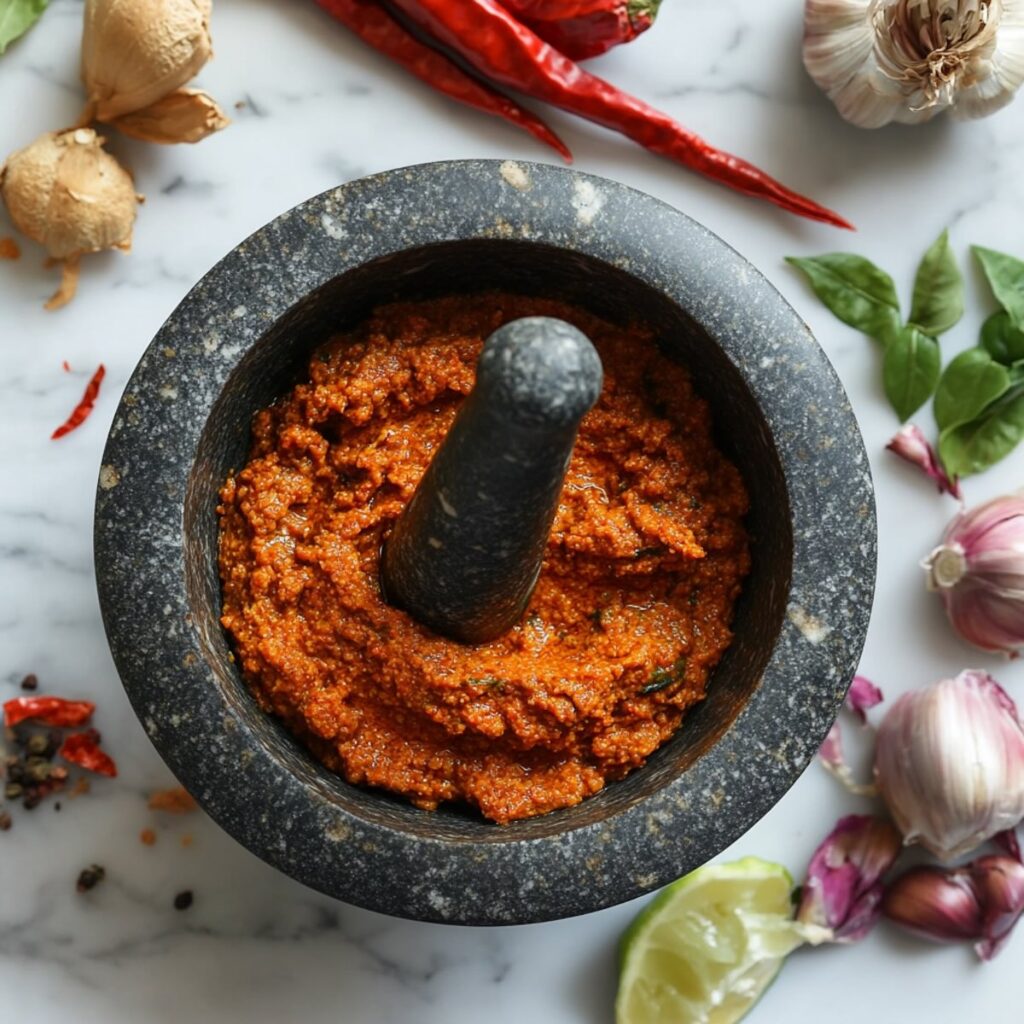
What kind of Mortar and Pestle should you use?
In Thailand they traditionally use a large 9″ or so sized stone mortar and pestle to break down Thai curry pastes and Thai chili pastes. There is more room in the larger ones to hold all the ingredients, and since the pestle is larger and heavier it’s more powerful.
If you only have a smaller stone mortar and pestle, it will take awhile to break down everything, and you should do it in batches.
I don’t recommend making this paste or any curry paste in a wooden mortar and pestle since those are used more for lightly bruising Thai ingredients to release their flavor, and not really to pulverize things since that isn’t what it’s made more since it’s not as powerful.
Storage & Reheating
- Fridge: 1 week in an airtight container.
- Freezer: Up to 6 months. If you want, freeze them in ice cube trays, and then thaw just the amount that you need.
Reheat Frozen Tom Yum Paste: If you used the ice cube trays you can just pop them out, and they will thaw quickly in a bowl on the counter, or you can defrost the paste in a microwave on a low (20% setting).
Additions and Substitutions
Shrimp paste substitute: if you are vegetarian or vegan, or just can’t find shrimp paste, you can substitute the shrimp paste for the same amount of miso, or just leave it out.
Dried red Thai chili peppers substitute: Fresh or dried cayenne peppers or serrano chiles. They aren’t as spicy, so feel free to add more than the amount you would have added of Thai chili peppers if you still want it spicy.
Dried Guajillo chilies substitute: The same amount of Dried Ancho chile or the Pasilla Negro chile. In Thailand they use dried Thai Spur chilies, but I have trouble finding them in America.
Lemongrass substitute: 1 tsp. lemon or lime zest for each stalk.
Galangal substitute: There really isn’t another herb that comes close enough to the flavor profile of galangal to substitute. Just leave it out if you can’t find it.
Shallot substitute: ½ of a small red onion.
Kaffir lime leaf substitute: ½ tsp lime zest for 1 leaf
Palm Sugar substitute: the same amount of brown sugar.
Frequently Asked Questions
What is Tom Yum Paste used for?
It’s perfect for if you don’t have time on a weeknight to cut up all the lemongrass, galangal and kaffir lime leaves. You can just make the paste ahead of time, put it in the fridge or freeze it and add a few tablespoons of it to replace the fresh Thai herbs used in these dishes:
What is a good substitute for Tom Yum Paste?
If depends what you are looking for!
If you aren’t up for making your own paste, but want Tom Yum or Tom Yum Fried Rice, you can just substitute Tom Yum Paste with the fresh Thai ingredients like lemongrass, kaffir lime leaves and galangal.
But if you want a paste for a stir-fry, you could try to substitute it with Thai Red Curry Paste, but it will taste very different.
Is Tom Yum Paste spicy?
Yes, it has Thai red chilis in it, so it’s spicy, since Tom Yum soup is known for being spicy. But the fun thing about making your own paste is that you can make it as spicy or not spicy as you want!
Is Tom Yum Paste healthy?
Yes, homemade Tom Yum Paste is healthy. All the Thai herbs in it are packed with antioxidants that help keep your body strong, and especially if you make your own it’s so good for you since you don’t add any weird preservative ingredients that they might add at a factory.
Is Tom Yum Paste vegetarian or vegan?
No, Tom Yum Paste is not vegetarian or vegan because usually it contains shrimp paste, But if you are vegetarian or vegan, and you are making your own paste, you can substitute the shrimp paste for equal parts miso, or just leave it out.
Does Tom Yum Paste have shrimp?
Yes, store bought Tom Yum Paste typically has shrimp paste in it, but if you don’t want shrimp paste in it, you can make your own with this recipe and either leave it out or use miso instead.
Is Tom Yum Paste gluten free?
Yes, Tom Yum Paste is gluten free!
Does Tom Yum Paste expire? How long does Tom Yum paste last?
It can last for a week in the fridge, and up to 6 months in the freezer.
Does Tom Yum paste need to be refrigerated?
Yes, make sure you refrigerate or freeze the paste since it has a lot of fresh herbs in it. It can stay in the fridge for a week, or the freezer for up to 6 months.
Where to buy Tom Yum paste?
If you aren’t up for making your own paste, our favorite Tom Yum Paste brand is Maesri. You can buy it from your local Asian market, or online.
Is Tom Yum Paste the same as Shrimp Paste?
Tom Yum Paste is not the same as shrimp paste.
- Shrimp paste or kapi is a dark purple-ish paste made from shrimp that have been salted, fermented and dried in the sun for up to a year.
- Shrimp paste gives an amazing umami flavor that makes so many dishes taste “Thai”.
- Shrimp Paste goes in Tom Yum Paste, but is not the same as it.
Other Tom Yum Recipes You’ll Love
Take a pic of what you create and share it on Instagram with me @thaifoodie. I can’t wait to see it!
Print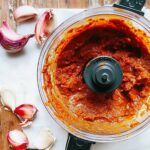
Tom Yum Paste
- Total Time: 18 minutes
- Yield: 1 cup 1x
Description
Short on time, but want Tom Yum packed flavor in your weeknight dinners? Discover all the secrets to making your own easy Tom Yum Paste!
Ingredients
3–7 Dried red Thai chili peppers, depending on spicy preference, de-seeded, and minced
3 Dried Guajillo chilies, de-seeded and minced
1 tsp. salt
4 Lemongrass stalks, minced
1 tbsp.Galangal, (about a 2 in. piece, no need to peel) minced
2 shallots, minced
2 tbsp. garlic, minced
1 tbsp. cilantro stems, minced
6 Kaffir lime leaves, stems removed and minced
1 tsp. White pepper powder
1 tsp. coriander powder
4 tbsp.Tamarind paste
1 lime, zested and juiced, about 1 tsp lime zest and 1 tbsp lime juice
2 tsp. Shrimp paste
1 tbsp. Fish sauce
2 tbsp. Palm sugar
Instructions
Remove the seeds from the Thai chilies by cutting them in half, and taking out the seeds.
For the Guajillo chilies, remove the stem and shake out the seeds, or cut in them in half, and scoop out the seeds.
(You might want to wear gloves when deseeding the chilies just to make sure you don’t accidentally touch your eyes after touching the chilies. I don’t normally wear gloves, and I just try to remember not to touch my face, but do what you need to do!)
Soak the chilies in hot water for 10 minutes, or until they are soft. Take out the chilies, but keep the water to use when blending the ingredients.
Make sure you finely chop all the ingredients to make it easier to blend them into a paste.
Mortar and Pestle Method:
Add the chilies and salt to a mortar and pestle. The salt not only helps with seasoning, but will also help break down the chilies. Pound them until they start to become a paste.
Then add the harder to break down ingredients to your mortar and pestle, like the lemongrass, and galangal.
Once those have become more of a paste, add the shallots, and garlic, until those have been incorporated.
Then add the cilantro stems, kaffir lime leaves, coriander powder and white pepper powder and mix them in.
Add the tamarind paste, lime juice, lime zest, shrimp paste, fish sauce and palm sugar and mix until everything is completely incorporated.
Mini Food Chopper
Add all the ingredients to the chopper, and a few tablespoons of the chili soaking liquid. Keep adding the liquid as needed to help break down the ingredients until they have reached a paste that looks similar to the one in the pictures in the post.
To use the Tom Yum paste for Tom Yum Soup, add 2-3 tbsp of Tom Yum paste per 1 cup of water, add more to taste.
To use the Tom Yum paste for Tom Yum Fried Rice or Tom Yum Pasta, add 3 tablespoons or more to the dish instead of where you’d normally add the fresh Thai ingredients like lemongrass, galangal, Thai chilies and kaffir limes.
Notes
For more in depth into, look above in the blog post under the headings: Substitutions, or Additions, and Recipe Tips and Tricks.
- Prep Time: 15
- Cook Time: 3
- Category: Paste
- Method: Blending
- Cuisine: Thai

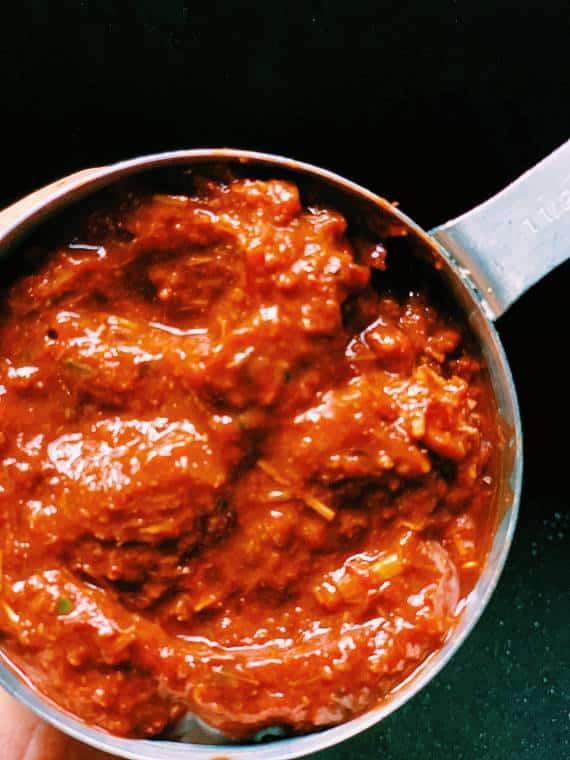
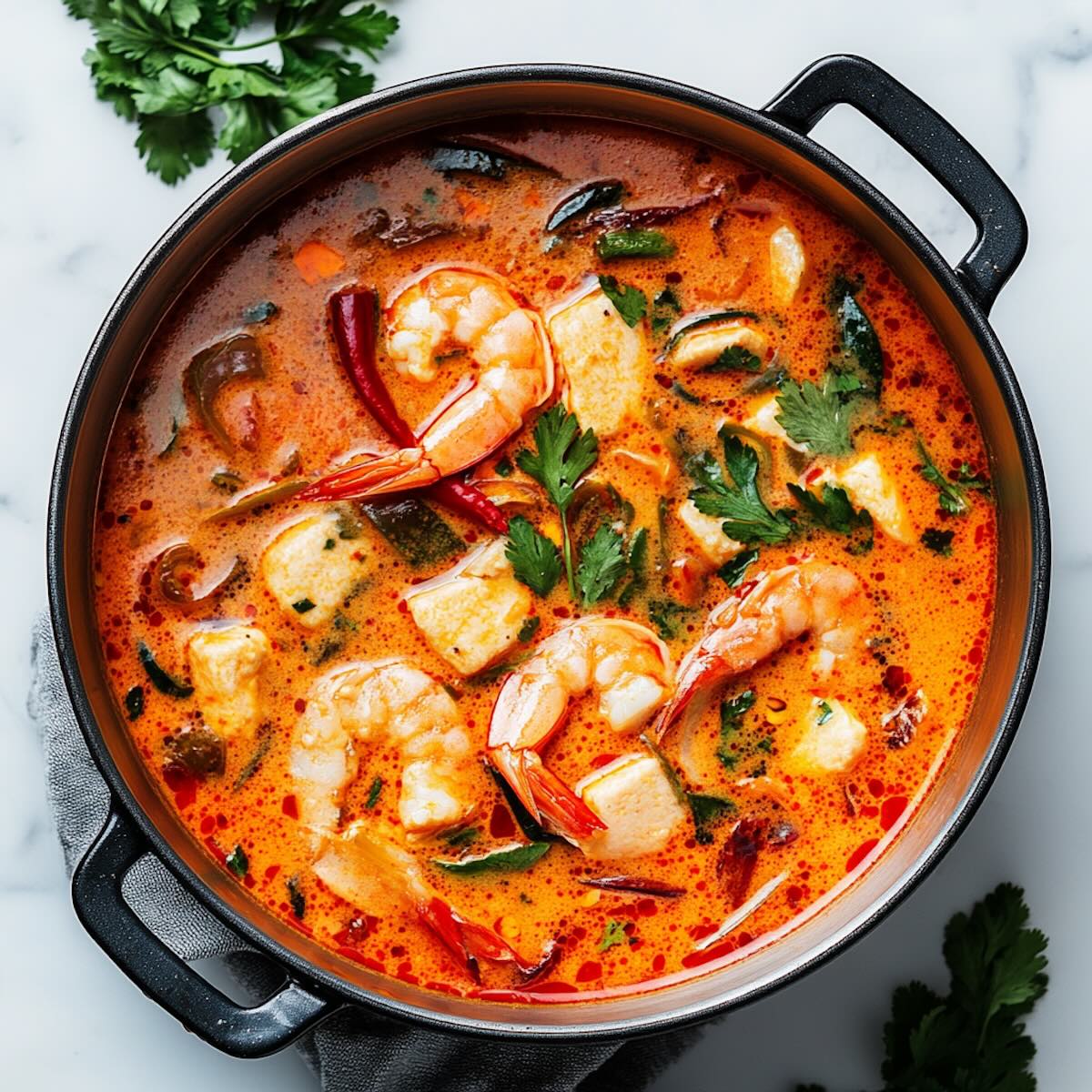
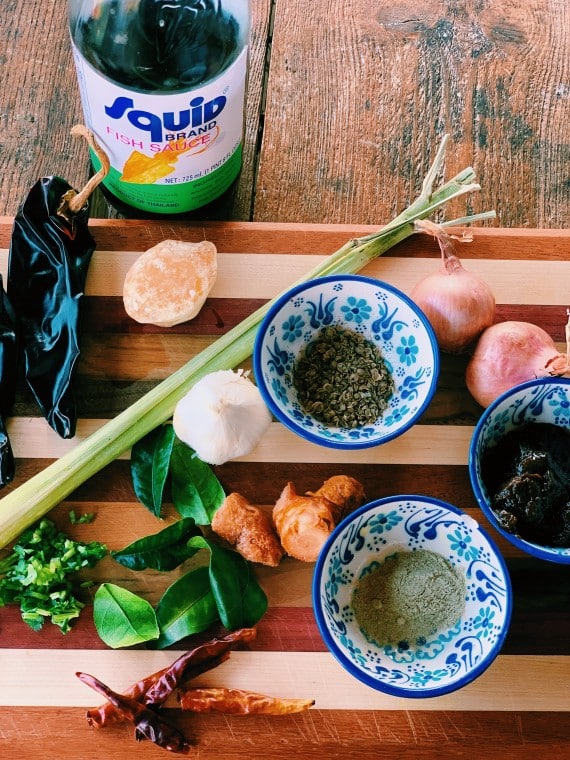

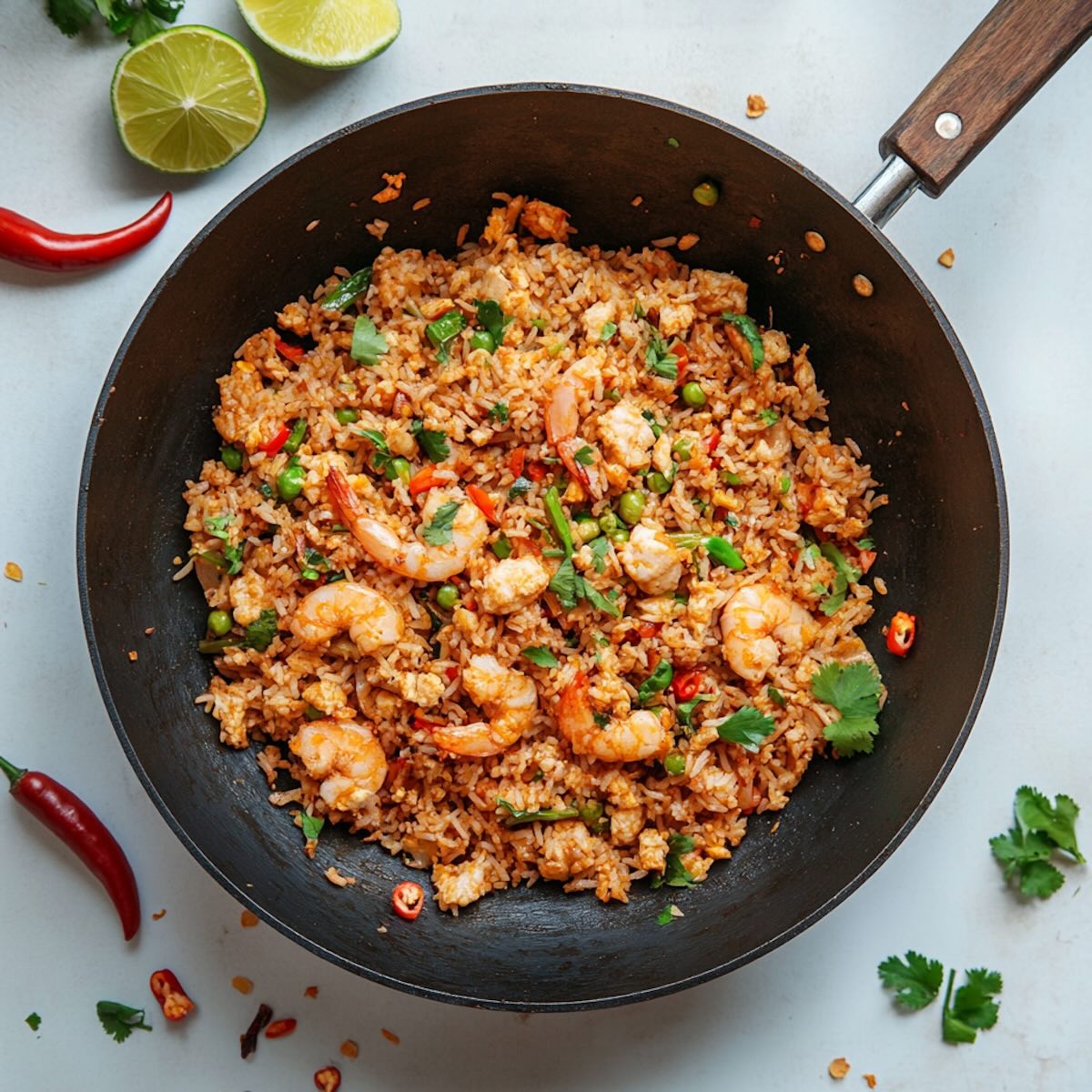
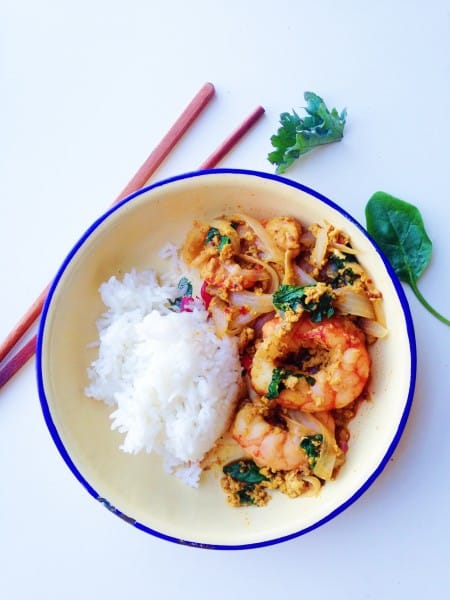

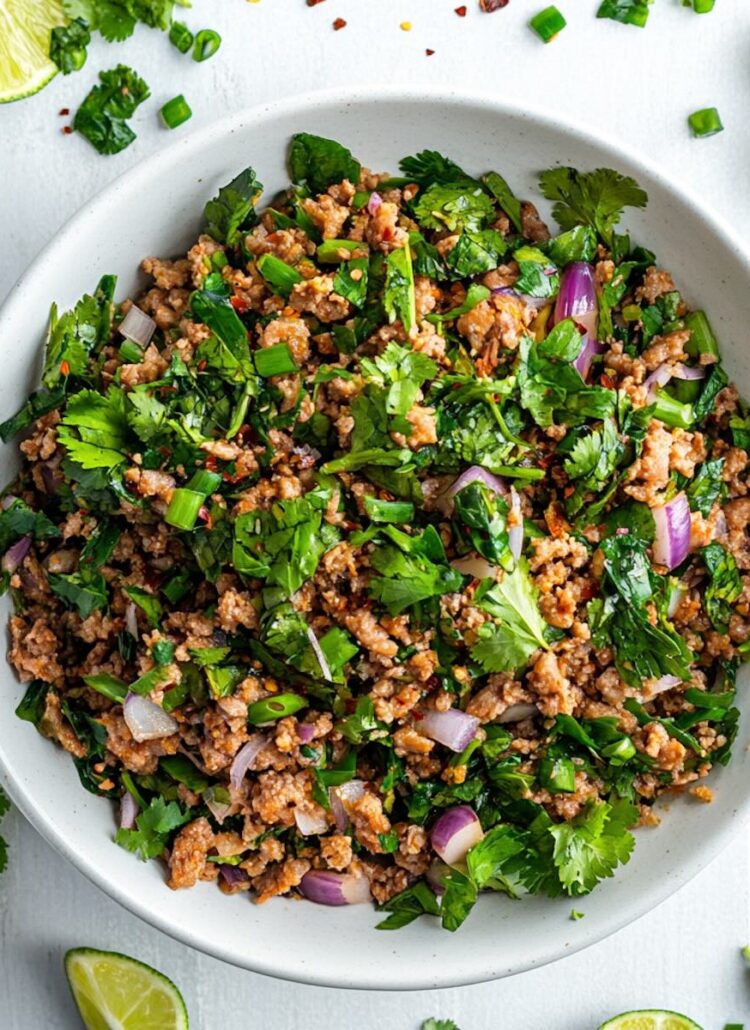
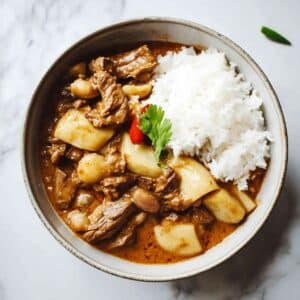
So good!!!
Is this tom yum authentic? I used to buy the tub off of Amazon, which tastes just like the Tom Yum when I would visit Phuket and Bangkok. Unfortunately, they contain all sorts of bad ingredients, I would like to stay away from.
Yes! My Thai Hubby approves of it and we agree it’s legit! Hope you enjoy it since it does contain all natural ingredients that are good for you!